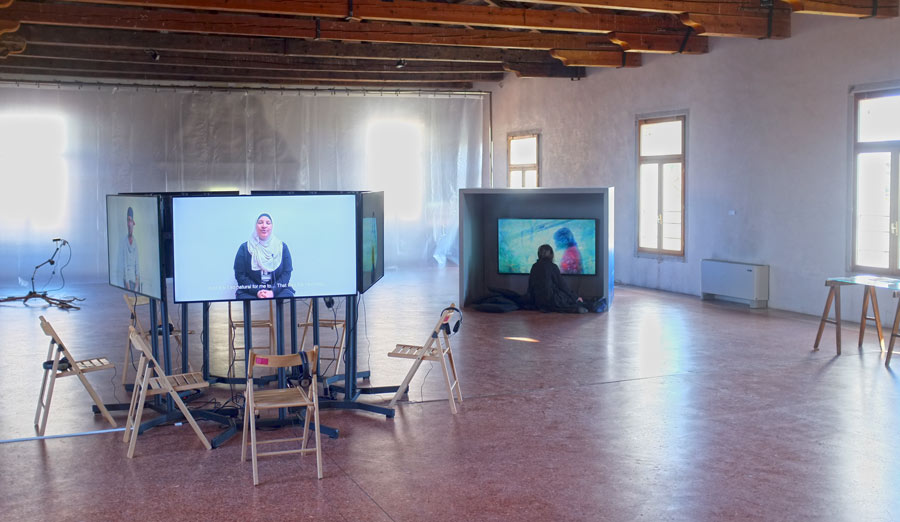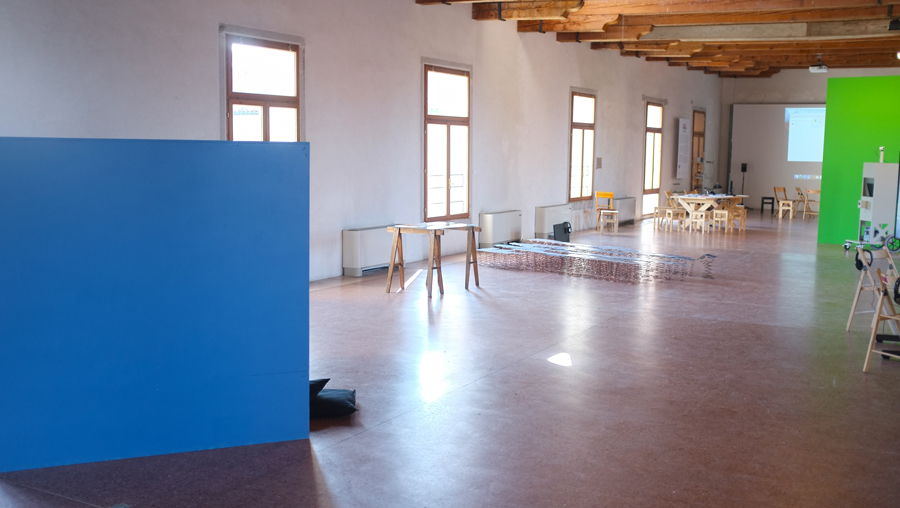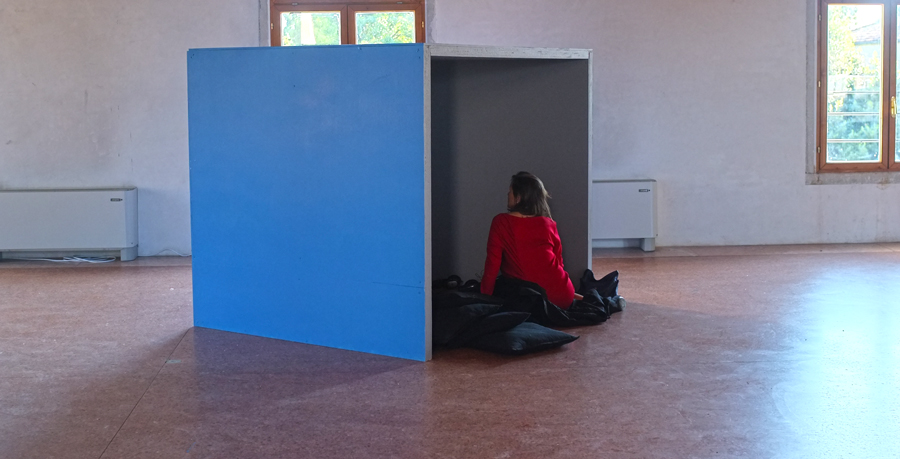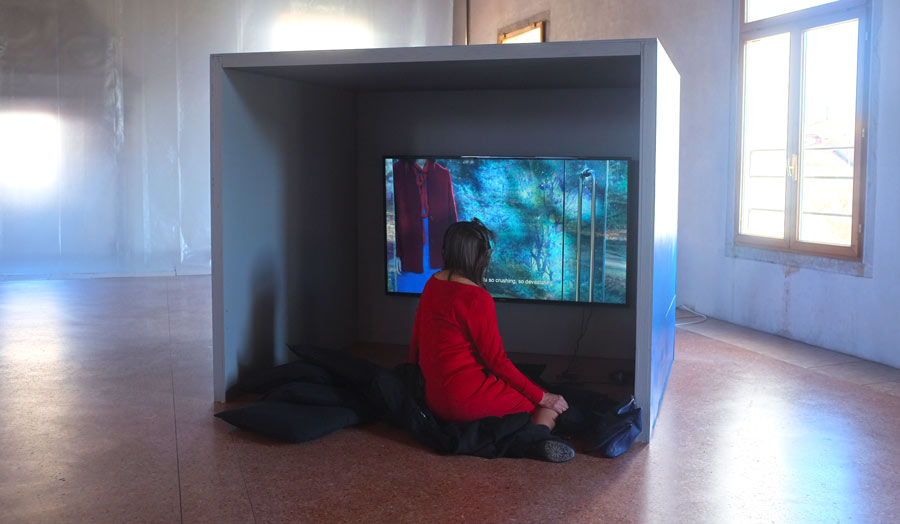Double Exposure
Video HD-PAL; 8’’
2017
presented in the exhibition "You got to say yes to another access"
for the 2nd Research Pavilion at the 57 La Biennale di Venezia




Responding to the call of “Utopia of Access” Double Exposure explores the limits of translation of artistic experience and the capacity to fully expose an artistic research. It gives attention to the absent, the inform, what is left out of possibility to be explained, exposed in the documentation of experience by presenting a video narrative spoken from the point-of-view of shadows.
Double Exposure is a video made for the exhibition "You got to say yes to another access" for the Utopia of Access: 2nd Research Pavilion at the 57ª La Biennale di Venezia, in 2017. The video was later presented at Sala Sonae – Museu de Arte Contemporânea do Chiado (PT), in a solo exhibition curated by Sandra V. Jurgens. A catalogue with an original text of the curator was published at the occasion of that exhibition.
Double Exposure is a response to the curatorial call Utopia of Access, which focus was the impact of the Berlin Declaration might have on artistic research. The Berlin Declaration is an EU decree that requires all publicly funded research is made accessible and transparent in order to enhance its impact, visibility and enhance the transfer of knowledge and innovation to society in general. “One of the essential questions posed by the curators was how to address that – which by its inherent nature or form – remains beyond representation.”
My research is concerned with the visual translation of affect as a strategy for knowledge production and Double Exposure reacts to the terminology of accessibility and transparency used by the Berlin Declaration in order to address “not only the difficulty of materialising and giving visibility to this abstract dimension, but also in addressing the question of how to represent that which is intangible, which has no body.”
Double Exposure e was inspired by Nietzsche’s story “The Wanderer and his Shadow.” The story describes a wandered that is surprised by his talking shadow and the dialogue that ensues between the two. The structure of Double Exposure’s script is inspired by Nietzsche’s allegory and references to Virginia Woolf, Mark Fisher, Paul Auster and Elizabeth Araújo Lima. The script focuses on the important shift from monologue do dialogue, “in order to convey the perspective of the shadow and thus paying attention to that which cannot be explained or transmitted in the documentation of experience.” The video reflects indirectly the challenges artistic research face in relation to the Berlin Declaration, but first and foremost, it attempts to question the reduction of awareness/comprehension to dualities of objective/subjective, visibility/invisibility, self/others, inside/outside, concrete/immaterial. The video is an exploration about what is felt but not capturable, as pretext to introduce the artistic problem of researching and documenting affect.
The setting of the video was chosen in order to emphasise these dualities. The video takes place at the Museu de Arte Contemporânea de Serralves (PT) in interaction with Dan Grahams’ glass sculpture/pavilion Double Exposure (1995-2003) that gives name to my project. The way the glass sculpture/pavilion was set, blends inside and outside, landscape and reflection. In email correspondence with Dan Graham, the artist writes that “the pavilion is about time and exposure.” Time and exposure are elements of the photographic apparatus, but the sculpture makes the glass act in a dysfunctional way with the landscape. The reflections on the glass surface do not show the landscape behind it, but complicates its perception. It does not do what is expected to do, which is to provide a clear yet shielded view.
The skew of functionality is a major theme in the dialogue between The Shadow and The Wanderer. Through the figure of The Shadow – an already conveyor of the pejorative, of the hidden – the script brings forth an accusation of the overbearing preference of the light and of the visible (within western culture) from which many unloved positions, otherings and construction of shadows became reality. Double Exposure looks at the said negative emotional condition of the contemporary subject as a possibility to construct a different kind of knowledge.
Camera: Patrícia Viana Almeida
Actress: Cristina Regadas
Narration: Benedikte Esperi
Original soundtrack: Haarvöl